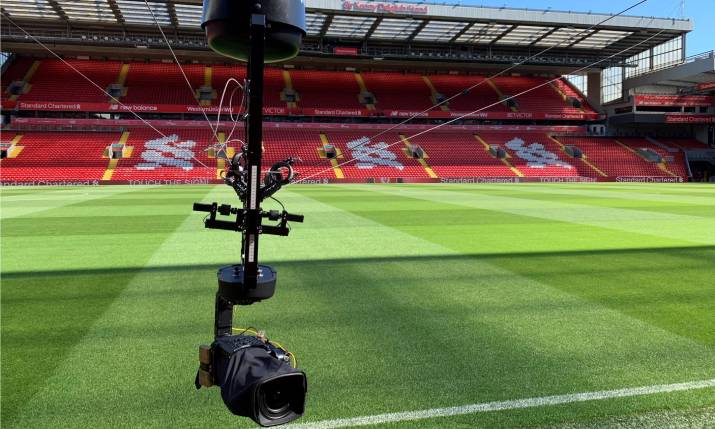Building knowledge, widening the appeal: Ross Video uncovers the role of data-driven graphics in next generation sports broadcasts
 By James Ransome, Ross Video sports & live events business development manager for the EMEA region.
By James Ransome, Ross Video sports & live events business development manager for the EMEA region.
In the world of sports broadcast, content producers are constantly looking for ways to engage with viewers on a deeper level while effectively managing their production workflows. This can be a tricky balance for sports broadcasters on two fronts.
First, to draw fans deeper into the game and attract new viewers, sports broadcasters are adding new elements to their shows, such as real-time data-driven graphics, augmented reality (AR) effects, in-depth graphical analysis and alternative camera views. While these emerging broadcast elements have elevated the at-home viewing experience in many ways, producers also recognise that these new effects must be deployed thoughtfully or managed in a way so that they don’t detract from the action on the field of play.
Second, producers also recognise that by adding new and emerging broadcast elements to their shows, they need to think about how these effects integrate into their existing workflows so that they seamlessly fit into their overall game presentation.
Finding the balance between successfully adding new production elements to sports broadcast workflows to engage fans in meaningful ways without detracting from the on-field action is a balancing act that sports broadcasters continue to grapple with each day.
Some of the experimental effects introduced in the world of sports broadcast have been short-lived – we all remember the rise and fall of 3D in sports. However, in my opinion, there are several broadcast trends that are here to stay, as broadcasters have been able to use these effects to enhance the sports spectacle.
Real time data-driven graphics
With the proliferation of information available to sports fans through social media and digital platforms, fans have come to expect access to information during matches in real time. To adapt to the digital world, broadcasters have experimented with integrating data-driven graphics into the production of a game to augment the action on the field.
An excellent example of this comes from the world of football, where broadcasters insert key player statistics throughout a game, such as passes completed, distance run, or overall possession statistics. These are simple yet meaningful data points that help tell a more compelling story for fans without taking away from the action. Additionally, new integrations between graphics platforms and third-party statistic providers make delivering these effects easy for operators.
In-depth sports analysis
The modern sports fan has come to expect more from their broadcasts than simply presenting the action on the field. They want instant reactions and expert analysis of the biggest moments soon after they unfold. In the world of football, presenters have successfully used sports analysis graphic tools to support their commentary.
More importantly for broadcasters, these new tools have helped commentators and presenters explain the more nuanced, complex aspects of professional sports to the more casual viewers, which has helped appeal to a wider audience outside of the most loyal fans. An example of this is when analysts break down controversial goals or offsides and use the support of graphical tools to better illustrate their point of view.
Alternative camera views
Aerial views of sports stadiums are nothing new to the broadcast world, but in recent years, broadcasters have taken this effect to another level through cable-based camera systems that are suspended above the field of play. When deployed in a thoughtful manner, these systems have been able to produce some of the most stunning views in sports. Not only do the camera-based systems deliver a perspective that fans don’t even get at the stadium, but they also provide presenters with an aerial view of the field to support commentary and analysis.
In addition, the aerial views have been proven to provide some of the most unique replay looks in sports broadcasts, and I think this is a tool in the production toolbox that is here to stay. In addition to cable-based camera systems, we’ve also seen the introduction of field-level Steadicams, which are used to deliver up-close shots of players and give a video game-type effect to the broadcast.
Where are we headed?
It’s difficult to predict what the latest public-facing trends in sports broadcast production will be, but when I think about production workflows and how to seamlessly integrate new elements into game production, I think about the consolidation of traditional broadcast equipment into ‘all-in-one’, or as we like to say at Ross Video, ‘hyperconverged’ platforms. These new tools, which merge traditional disparate equipment, will undoubtedly make it easier for production teams to push the limits on new groundbreaking effects during play or in the studio.
Looking ahead, I expect to see more data-driven graphics, sports analysis tools and camera-cable-based systems being integrated into a standard show. The key for producers will be finding that perfect balance.

